68 Best Facial Hair Styles for Men You Should Try At Least Once
Far above us, obscured by clouds, is the peak of Everest.
We refer to the world’s most imposing mountain because it serves as an apt analogy for what we’re going to do here.
We’re going to present to you the most definitive, complete guide to facial hair and facial hair styles you’ll find everywhere else.
Indeed, it’s an Everest-like task but, as you’ll see, we’re not in it for the “attempt”; we’re here to complete the job. We’re going to guide you to the peak.
We’re going to cover every type of facial hair style – from beards to goatees to mustaches while breaking down each broader category into individual styles.
We’re not just going to tell you about “beards,” we’re going to list and define every beard style that we’ve found through our research. We’ll tell you what beard shape best fits your face.
Want a quick history lesson on facial hair? It’s here. And we’ll also delve into other styles of facial hair.
Gentlemen, let’s begin the climb.
The complete facial hair styles chart
Here’s a chart that gives you a basic rundown of every facial hair style. You can use it to guide you as you consider the many options for your facial hair.
The list of all facial hair styles
You can probably point out a good number of beard styles. But, like most people, you’ve probably just identified the tip of the iceberg. We’ve researched and identified no less than 27 beard styles, 15 goatee styles, and 26 mustache styles.
- 5 o’clock shadow (Designer stubble)
- Light stubble
- Heavy stubble
- Corporate beard
- Full beard
- Hollywoodian
- Short boxed beard
- Chinstrap
- Chin curtain
- Neck beard
- Ducktail
- French fork
- Mutton chops
- Friendly mutton chops
- Hulihee
- Yeard
- Garibaldi
- Verdi
- Sparrow
- Klingon
- Wolverine
- The Winnfield
- Brett beard
- Dutch
- Old Dutch
- Sideburns
- Clean shaven
- Classic goatee
- Full goatee
- Goatee and mustache
- Anchor
- Extended goatee
- Goatee with chin strap
- Handlebar and goatee
- Handlebar and chin puff
- Norse Skipper
- Petite goatee
- Goat patch
- Soul patch
- Balbo
- Van Dyke
- Rap industry standard
- Natural mustache
- Painter’s brush
- Lampshade mustache
- Chevron
- Handlebar mustache
- Petite handlebar
- Horseshoe mustache
- Horseshoe mustache with soul patch
- English mustache
- Pencil mustache
- Toothbrush mustache
- Dallas mustache
- Cowboy mustache
- Wild West mustache
- The Gunslinger
- Super Mario
- Walrus
- Hungarian
- Imperial
- Fu Manchu
- Dali
- The Zappa
- Cantinflas
- A la Souvarov
- Freestyle
- Beardstache
The best facial hairstyle for your face shape
Just like you wouldn’t place any old tire on any old sports car, you shouldn’t just grow any hair style on your face.
That’s because faces are different – yours might be more oval-shaped while the guy sitting at the next table may have an elongated face – and different facial hairstyles work best with certain faces.
So, Step One in determining what style is best for you is taking a long look in the mirror. Look closely at your face to evaluate its shape. How do your cheekbones, jawline, and chin all work together?
Figuring your face’s basic shape isn’t all that difficult, and once you’ve determined what that is, it’s time to pick a style that suits you best.
Experts also suggest trying to make your face look as oval as possible because it’s not only the most aesthetically-pleasing shape but will prevent you from over-exaggerating a narrow face or widening a shorter one.
Square face
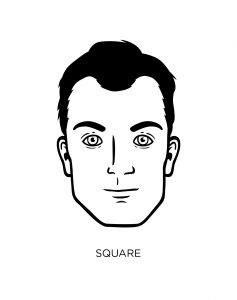
Try keeping your beard short on the sides with a little extra length on your chin.
Round face
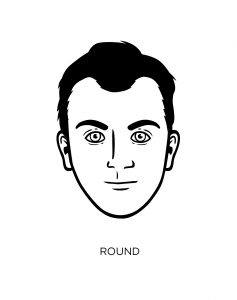
Add definition by keeping your beard shorter on the sides and fuller on your chin to add length to your face.
Oval face
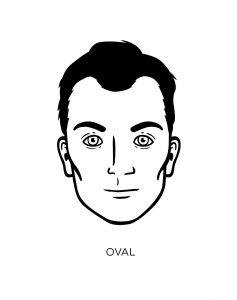
Oval is a good shape to have because most beard styles will look good on you. If you prefer a shorter beard style, keep it even on the sides and bottom, and grow a longer beard only if you feel compelled to break out of the traditional workplace mold.
If you prefer a shorter beard style, keep it even on the sides and bottom, and grow a longer beard only if you feel compelled to break out of the traditional workplace mold.
An oval face can wear any beard style, but keep it trimmed in order to maintain balance between your facial features.
Triangular face
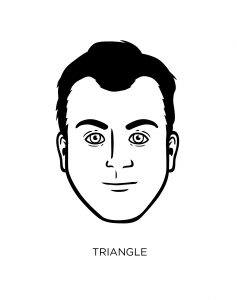
In this case, choose a beard that is longer on the bottom and shorter on the sides, but wider on the graduated parts of your chin – filling in space will create a more oval look.
Opt for a longer beard that starts narrower at the cheek line and widens at the chin to bring balance to your features.
Rectangular or oblong face

Be careful of adding additional length to your beard with this kind of face; instead, grow a beard that’s short on the bottom but full on the sides.
Tidy beard styles such as goatees, full beards, circle beards and Van Dykes are all good choices for rectangular faces.
Diamond face
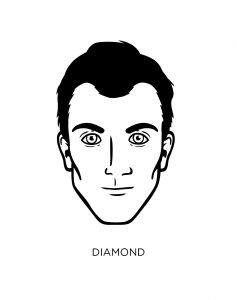
The beard that best complements a diamond face is one that hides the sharp angles to the chin. Keep it longer on the bottom, but trim the sides.
The diamond shape face is one of the most unique shapes for a face, and there are a lot of great options for facial hair. In fact, the diamond face is one of the most versatile when it comes to facial hair styles.
8 Indispensable facial hair products for style and maintenance
We all know that keeping facial hair looking its best involves more than straightening it with our hands every morning after we get out of bed.
Styling and maintaining it requires a specific set of tools and products, and the ones listed here (in no particular order) are considered must-have.
1. Beard Oil

It simply needs to be part of your daily hygiene regimen, along with showering, deodorant and everything else that helps get you out the door in the morning.
Beard oil has become increasingly popular in recent years, but its origins have been traced back to our Native American ancestors. Its main benefits are these:
- Beard oil moisturizes your hair follicles and the skin underneath. That’s particularly important in harsh weather conditions that can make your beard dry and brittle.
- Scented beard oil makes your beard smell good.
- Beard oil helps get rid of beardruff, whose similarly nasty brother is dandruff. The only difference is that they exist on different parts of your head and face – with the same off-putting results.
2. Beard Balm
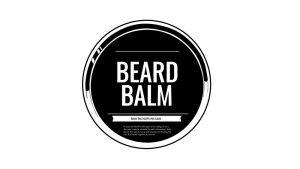
The main ingredients in beard balm are beeswax and butter (shea or cocoa butter in most cases).
3. Beard/Mustache Wax

And if you prefer a mustache style that must be twisted into shape, you absolutely, positively need beard wax.
4. Beard shampoo
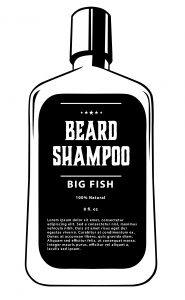
Note: Beard shampoo is different than the shampoo you use on your head. You can use the latter on your beard but won’t get the same results.
5. Beard Conditioner
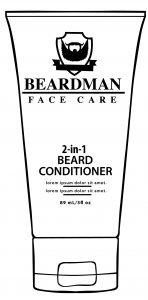
The key to applying beard conditioner is making sure that it covers every strand of your facial hair.
6. Beard comb

They have polished edges that won’t scratch your skin; they should be anti-static, and – ideally – they should be small enough to fit in your pocket (for the ultimate convenience, particularly mustache combs).
7. Beard brush

It also combs away dirt and other particles that can make your beard dry and brittle.
8. Beard Scissors
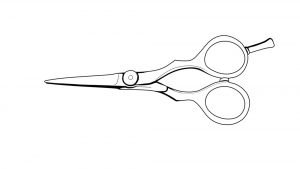
Your grooming kit needs to include a quality beard trimmer, but also a pair of beard scissors. Scissors are excellent for fine detail trimming, but also for a quick trim when you’re up against the clock. They’re simple but effective.
9. Beard trimmer
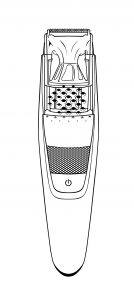
10. Stubble Trimmer
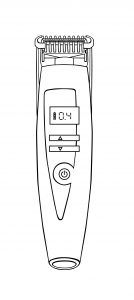
To maintain your stubble, you need a stubble trimmer. OK, nothing like stating the obvious, but we only do so because using a beard trimmer on your stubble won’t get the job done.
A stubble trimmer is designed to work best on very short facial hair lengths (think of the 5 o’clock shadow). Just be sure that what you’re buying is designed to trim stubble.
11. (Electric) Razor
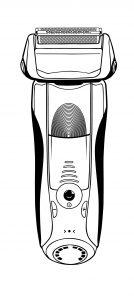
How facial hair develops and how you can make it thicker
Let’s get technical for a moment: facial hair is considered a secondary characteristic of human males that develops during adolescence or the later years of puberty.
The development of an adult beard usually doesn’t occur until a man in his late twenties, or even later.
There are exceptions to every rule, however, as boys as young as 11-years-old have been known to develop facial hair. The first facial hair on males tends to grow at the corners of the upper lip and then spreads over the entire upper lip by age 16 or 17.
The specific order of how facial hair develops is like any biological process in that it varies from person to person. For growing a facial hair later in your life check these two guides: How to use minoxidil to thicken your facial hair and how to grow a thicker beard.
Women are capable of developing facial hair, especially after menopause, but typically in far less quantity than men. And, let’s be honest, facial hair on women isn’t considered nearly as attractive of a trait as it is in men (to state the obvious).
That’s certainly why most women in Western culture remove facial hair by shaving it, removing it with tweezers, or by using other methods.
7 Interesting things about facial hair throughout history
Facial hair has been around for, well, forever. Have you ever seen a depiction of primitive man without facial hair?
But back then, when dinosaurs still roamed the earth, the beard wasn’t a fashion statement – it was a way to help extend what was, by all accounts, a relatively short lifespan.
Beards, after all, provided warmth and protection from the elements. They also were intimidating, and in a world filled with danger, it didn’t hurt to look like a tough guy.
Facial hair, simply put, was a necessity when man lived in caves and dealt with severe weather and other dangers he didn’t quite understand.
1. Beards of metal
Fast forward to ancient Egypt, where facial hair became a fashion statement among royalty who used a false beard made of metal. Both kings and queens practiced this style and also used dyes to color their real facial hair.
2. A symbol of wisdom
It’s hard to say whether beard oil first came into play in Mesopotamian civilizations, but evidence suggests that it was used widely among beardsmen.
Mind you; this was a group of people who took their beard stylings seriously as they used ancient curling devices to do all types of fancy styling to their facial hair.
Beard dye was also popular, and the Assyrians favored black while the Persians were partial to an orange-red color. Wearing a beard, particularly in Turkey and India during ancient times, symbolized wisdom.
3. Punishment by shaving
We all know about ancient Greece and the many innovations they created – in effect, to set a foundation for much of modern civilization. The Greeks loved their beards, as well, and used tongs to produce curls that were the envy of many.
For a long time, beards were only cut as punishment, but Alexander the Great later decreed that soldiers couldn’t wear beards because he feared opposing soldiers would grab onto them to gain an advantage during a battle.
4. Trimmed and well-groomed
Meanwhile, over in Rome, bearded men preferred to keep their facial hair trimmed and well-groomed.
Shaving still wasn’t accepted or a widely-used practice, but the use of razors was encouraged when the city underwent a hygienic push in 618-578 BCE.
By 454 BCE, shaving took hold and Greek Sicilian barbers set up shop on the streets of Rome to ply their trade.
The clean-shaven look eventually became the norm, but the ancient philosophers we all know and love kept their beards, perhaps as a shout-out to the time-tested beards-as-wisdom adage.
5. In and out
Facial hair in other cultures also went through times of popularity and periods when it was strongly discouraged.
Christian clergy members were required by law to shave, but facial hair returned once the Crusades began, and beards (and mustaches) were allowed for the next several centuries.
Many English princes sported mustaches until William the First created a law that required them to shave to fit better with current fashions.
6. Pointy-bearded aristocrats
The Van Dyke emerged in the 1600s thanks, in part, to the work of a painter named Anthony Van Dyck – whose portraits included aristocrats with pointed beards.
The Van Dyke’s shape was crafted with the help of pomade and wax applied with tiny brushes and combs.
Meanwhile, the matter of how to keep a beard in stylistic shape during sleep was resolved with the invention of different gadgets.
7. The modern beardsman
Needless to say, facial hair and beard styles have continued to evolve over the years, and the beards of famous men such as Abraham Lincoln are etched in memory.
It’s estimated that over 30 percent of American males have facial hair of some kind, and that number jumps to over 50 percent worldwide.
As we’ve discussed before, the benefits of wearing a beard in today’s world are many – from exuding confidence to being more attractive to the opposite sex.
The bottom line is that facial hair has a deep, rich history that continues to evolve. Growing a beard will place you in a long, valued line of men that extends back to the time when the invention of the wheel was just someone’s wild idea.
As we delve deeper into the world of facial hair styles, it becomes clear that options for finding a style that fits you are limited only by your imagination.
But as you search for the perfect match, know your facial shape and move forward accordingly. You won’t be disappointed.
Continue to:
- Beard styles
- Goatee styles
- Mustache styles

6 Comments
Great! These suggestion are very helpful for us! Thanks for sharing.
Very nice blog and I love to read it. The information you have given in the blog is very good and I really love to read it. Thank you for this.
Missing the ‘duster’ and the ‘wizard’
Coming soon.
This is the best website I have ever encountered when it comes to all things bald and beardy. It would be nice to see “The Complete List of Facial Hair Styles” presented on a drawing of a bald gentleman because beards often have a different look depending on whether or not there is a full head of hair vs. a shaved head. The advice on baldingbeards.com has been spot on. Keep up the good work.
Good suggestion and thank you, Timothy.